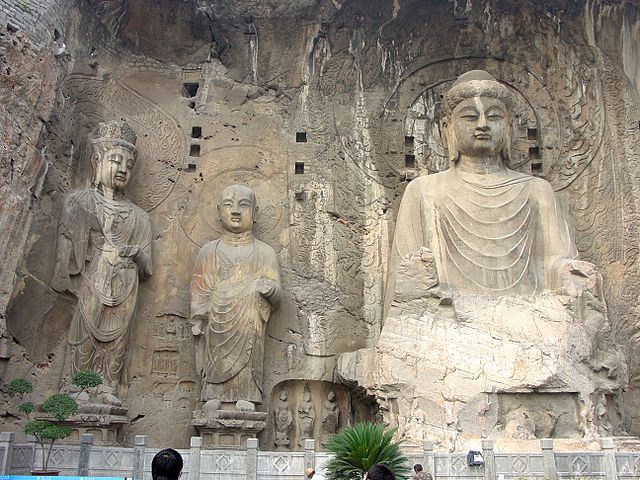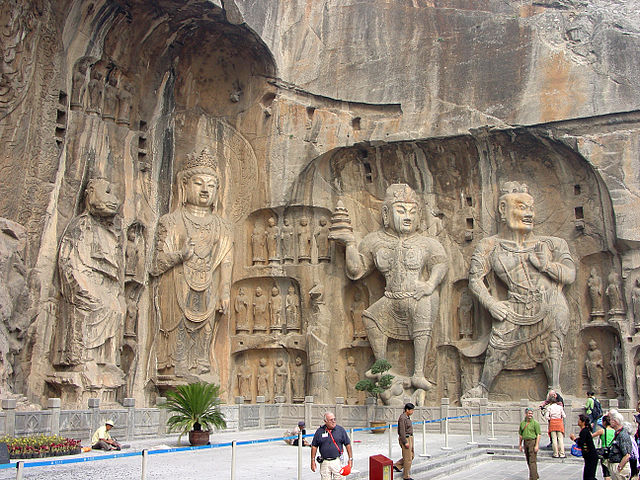
left and center rear wall

right rear wall; and north wall

left and center rear wall |

right rear wall; and north wall |
Tang Dynasty, 675 A.D.
Longmen Caves
The Fengxian cave, also known as the "Great Image Niche," was commissioned by Wu Zetian, then fifty years old and the empress of Tang Gaozong, in order to consolidate and strengthen her position as supreme ruler of China; for so she was, in all but name, the Emperor Gaozong having been incapacitated by a stroke in 660 A.D. Formerly a concubine of Gaozong's father Taizong, in her rise to power she had cruelly murdered not only Gaozong's wife and concubine, but even her own newborn daughter. Winning over the religious establishment by enormous donations of land and money for monasteries and temples, she built the Fengxian grotto not out of piety, but rather as a masterpiece of "pork barrel" politics and religious propaganda. In so doing, however, she managed to create the finest assembly of Tang sculpture that can still be seen at the present day.
The cave, like all those at Longmen, was hand-carved from the cliffside. Its facade measures about 30m by 40m (100ft by 130ft); its central Buddha, the tallest figure in the cave, is about 17m (56ft) high. The viewer is dwarfed by these towering sculptures, which nevertheless inspire rather than intimidate, welcoming the worshiper to participate in the grand assembly. As with the great Gommateshvara Colossus at Shravanabelgola in India, the sculpture's overwhelming scale convinces the visitor, on some atavistic level, of the true presence of the divine.
The layout of the nine figures is a pentad (central Buddha flanked by disciples and bodhisattvas) on the rear wall, with a lokapala and a vajrapani on each side wall. An inscription accompanies the central Buddha and identifies it as Vairocana (Howard, Chinese Sculpture, p.299). The lokapala on the north wall, holding a stupa, is Vaishravana. The south wall is damaged. Interspersed among the major deities are numerous smaller figures of deities, monks, donors, etc.
Reference for names: Chinese Deities

|

|

|